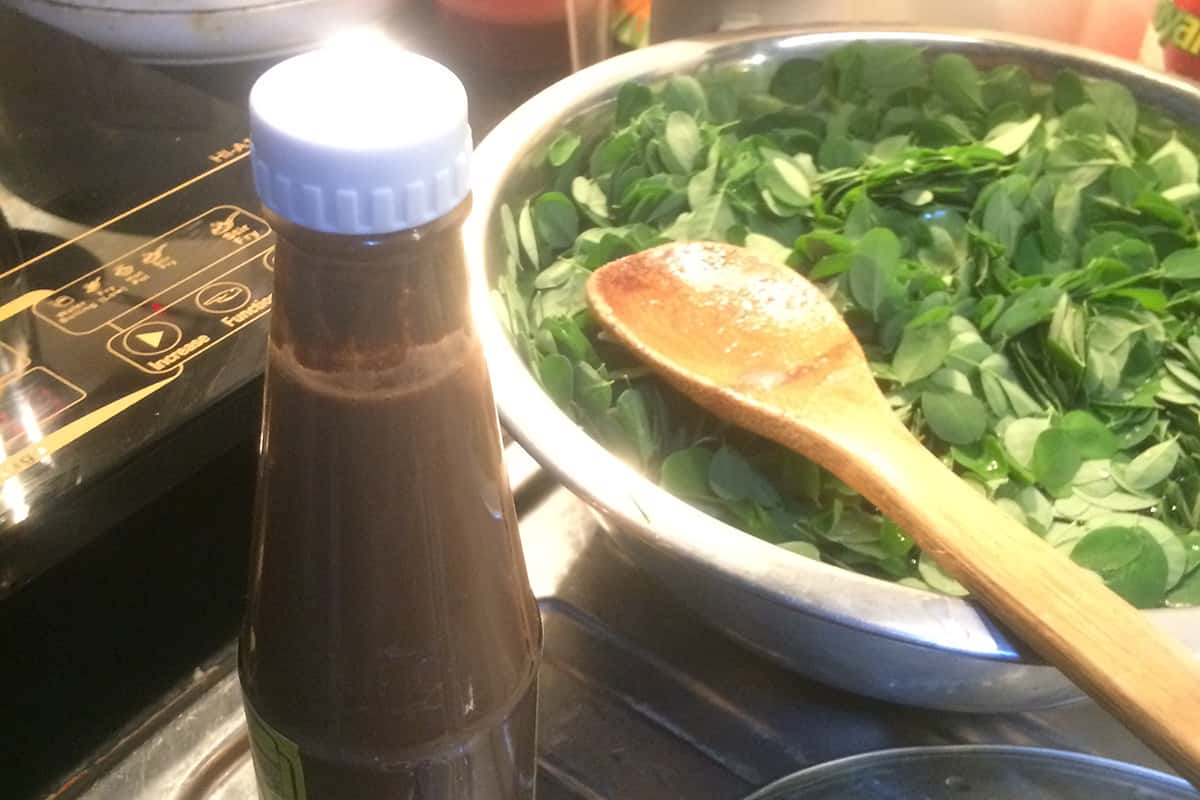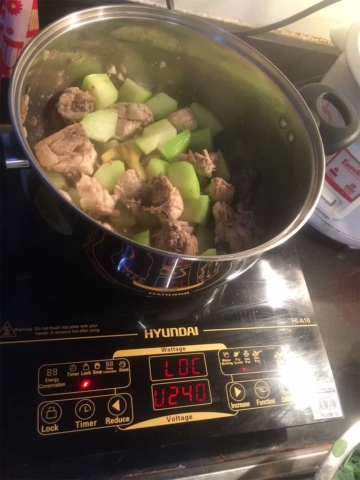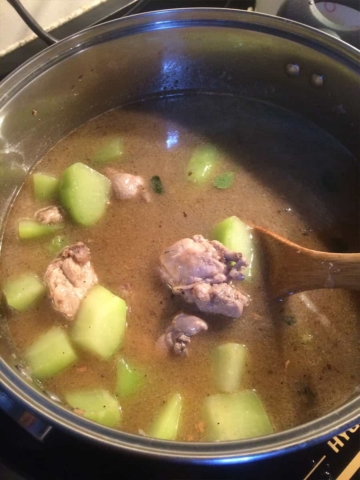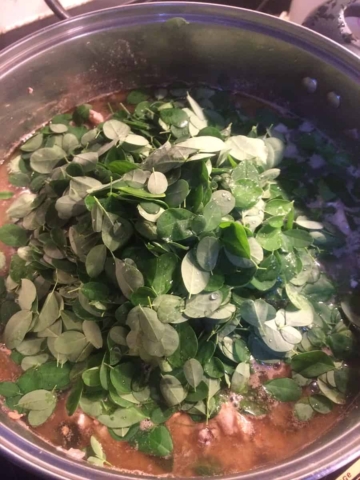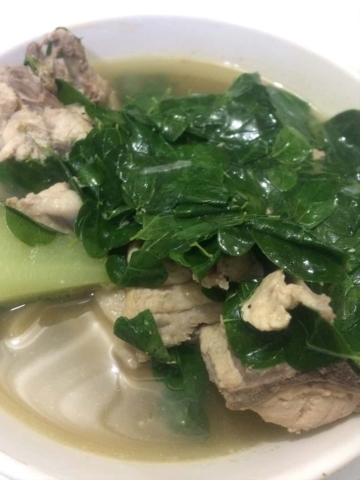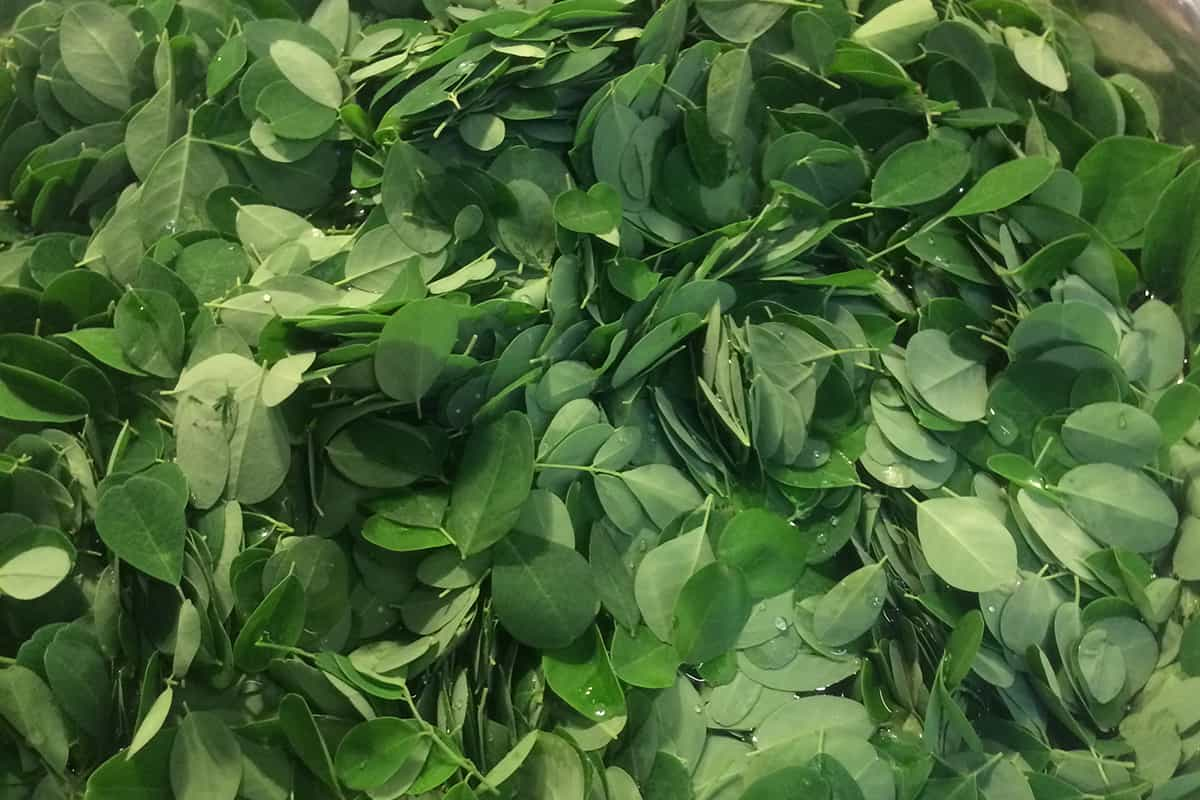Binagoongang Manok with Malunggay Leaves – A Flavorful Twist on Tinola
Learn how to cook Binagoongang Manok with Malunggay Leaves. A North Luzon-inspired twist on Tinola using bagoong and malunggay for a flavorful, nutrient-packed soup.
If you love Tinolang Manok but want something bolder and saltier, try Binagoongang Manok with Malunggay Leaves. This dish is believed to have originated in North Luzon, where bagoong (fermented fish sauce) is a staple condiment. Thanks to my sister Brenda, who first introduced me to this dish, it has become one of my go-to recipes when I crave a comforting chicken soup with a flavorful twist.
Unlike the usual tinola, this recipe replaces patis with bagoong and adds malunggay leaves—a game changer that balances the salty broth while boosting its nutritional value.
-
-
Binagoongang Manok with Malunggay Leaves Ingredients
-
½ kilo chicken (tinola cut)
-
50 grams ginger (sliced)
-
10 cloves garlic (chopped)
-
1 medium onion (sliced)
-
4 tablespoons fish bagoong
-
1 medium papaya or sayote (cubed)
-
1.5 liters water
-
1 cup malunggay leaves (cleaned and picked)
-
Salt to taste
How to Cook Binagoongang Manok with Malunggay Leaves
-
Heat oil in a pot. Sauté garlic, onion, and ginger until fragrant.
-
Add the chicken pieces and cook until lightly browned.
-
Stir in 4 tablespoons of fish bagoong. Sauté until the chicken is fully coated.
-
Add papaya or sayote. Stir-fry for 5 minutes.
-
Pour in 1.5 liters of water and bring to a boil. Simmer for 10 minutes.
-
Check if the vegetables are tender.
-
Add malunggay leaves and cook for another 1–2 minutes.
-
Adjust seasoning with salt if needed (avoid adding extra bagoong to prevent overpowering saltiness).
Serve hot with steamed rice.
Cooking Tips
-
Balance the saltiness: Bagoong is naturally salty, so use salt sparingly at the end.
-
Use fresh malunggay leaves: They add a mild, earthy flavor and are packed with nutrients.
-
Papaya vs. Sayote: Both work well—papaya gives a slightly sweeter finish, while sayote adds a neutral balance.
- Simmer gently: Avoid overcooking the malunggay leaves to retain nutrients and color.
-
-
Health Benefits of Malunggay (Moringa Oleifera)
Malunggay is more than just an ingredient—it’s a superfood. Rich in vitamins A, C, and E, calcium, and antioxidants, it’s often used in traditional medicine to help fight malnutrition, boost immunity, and support nursing mothers.
-
Leaves: Used in soups, salads, and viands.
-
Pods: Cooked, fried, or pressed into ben oil.
-
Flowers: Can be cooked or fried in batter.
This makes malunggay not just a flavor booster but also a powerful way to add nutrition to everyday Filipino meals.
FAQs About Binagoongang Manok with Malunggay Leaves
Q: Can I use shrimp bagoong instead of fish bagoong?
A: Yes, but the flavor will be slightly sweeter and richer compared to fish bagoong.
Q: Can I replace papaya with sayote?
A: Absolutely. Both vegetables work well—use whichever is available.
Q: Is this dish kid-friendly?
A: If kids are not used to the salty taste of bagoong, reduce the amount and balance with more vegetables.
Q: Can I store leftovers?
A: Yes, store in an airtight container in the fridge for up to 2 days. Reheat gently before serving.


